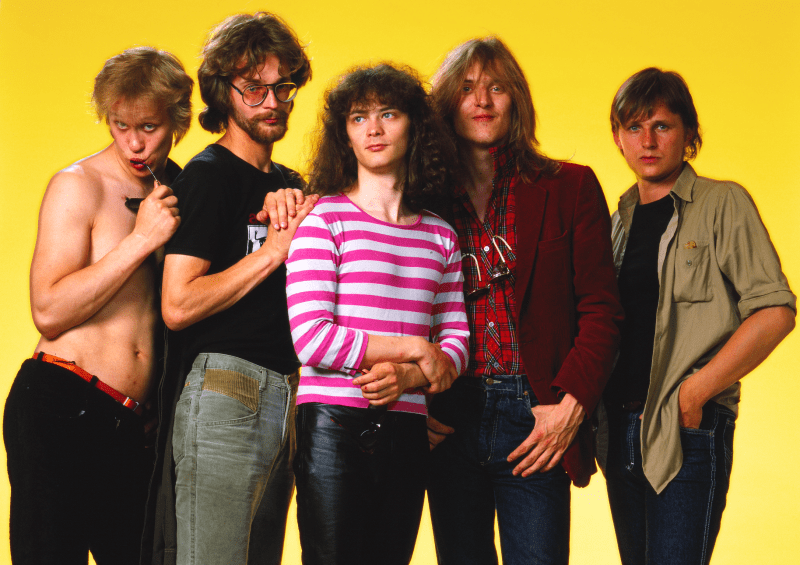This new book describes the development of manserock from the 1960s to the early 1990s. The meeting of two country boys in Tampere in the early 1970s was a turning point in rock culture. Even before Juice Leskis and Mikko Alatalo, Tampere knew how to rock.
– I see it as an expression of a certain era, starting in the 70s. It also involves the introduction of the Finnish language.
Tampere played a crucial role in this transformation.

The impetus to write a book about manserock came early in his career, when Korkki was working as a programme manager for the local radio station 957 in Tampere.
– When I was young, I had gotten to know these Hemmes. I wanted to somehow bring back that era.
The story starts back in the 60s
In his book, Korkki starts the story from the 1960s, when rock culture started to wake up in Tampere.

University also influenced the birth of manserock
In the book, Mikko Alatalo tells how Leskinen’s meeting and the texts struck me like an electric shock.
– It bridged the gap of years that existed between Finnish folk music and Anglo-American rock lyricism, Alatalo describes.
It is also worth noting that a manse rocker does not have to be born in Tampere. Most of them have actually come to the city from somewhere else, Alatalok’s Kiiming and Leskinen’s Juankoski.
– The university was terribly important – the university brought in humanists, says Jari Korkki.
The women of Manserock finally emerge
In his book, Jari Korkki talks about the often forgotten manse rockers: women. The groups Gasoline Girls and Petrol Boys and Ilona had an impact in the city at the same time.
– In the 80s, Tampere’s mimmies showed that we too know how to make bands, says Korkki.
– Kikka said that you are the first journalist ever who wants to know something about the women of Manserock.

When Ilona got a recording contract, it was the women’s turn to laugh.
The right size city
The pages of Jari Korki’s book are filled with the names of well-known musicians, bands and places. Many artists have already passed from time to eternity. The same has happened to cups and cultural events.
The author himself is involved in many stories. Nostalgia is noticeable.
In Kork’s opinion, younger people should also familiarize themselves with the history of manse rock. He highlights the importance of Juice Leskinen to Finnish rock lyrics and on the other hand the special quality of Tampere. Tampere is so small or of a suitable size that the creators of the culture know each other and the genres mix.

As a phenomenon, manserock has inspired numerous works. In 2006, a highly popular musical premiered at the Tampere Työväen Theater. Based on it, a film of the same name was released in 2013.
Harri Rinne wrote a book about his friend that was published in 2002
Mikko Alatalo’s career and repertoire can be explored again on Friday evenings in the Nelonen program.
Korki’s book ends in 1993, when he moved away from Tampere and stopped actively observing manse rock.
Many are gone, but the manserock story continues. Founded in 1977, Popeda is still actively touring. Likewise, Eppu Normaali continues its career, even though there was sometimes an eleven-year break in the recordings.

